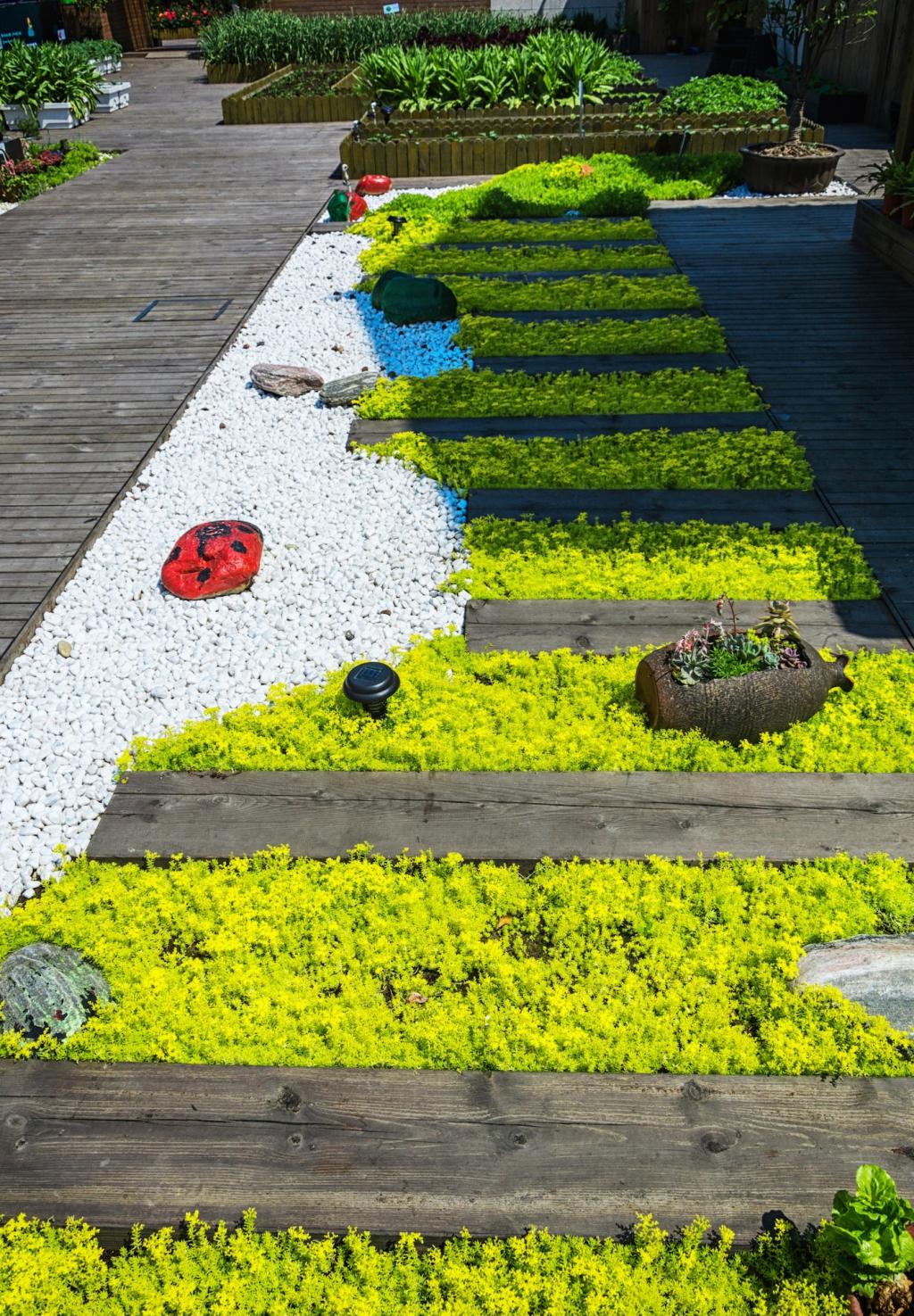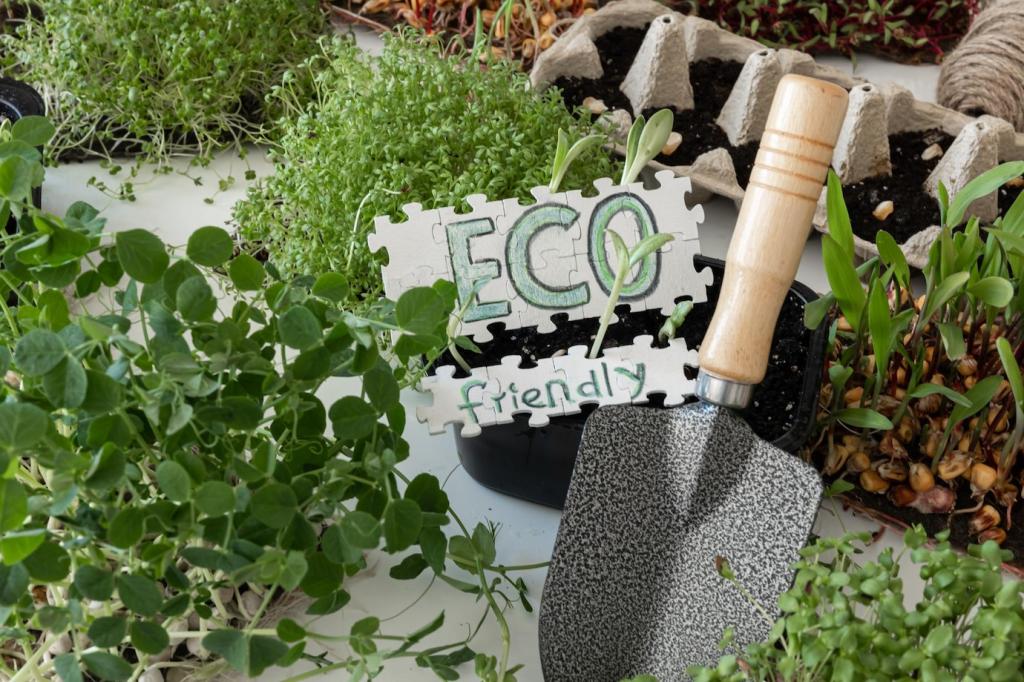Organic Mulch Options: Build Healthier, Happier Soil
Theme: Organic Mulch Options. Welcome to a lush, down-to-earth guide where we explore textures, smells, and the science of natural mulches that protect plants, feed soil life, and make gardening beautifully effortless.
What Makes Organic Mulch Magical
The Living Blanket Effect
Organic mulches act like living blankets, softening sun and wind while welcoming fungi and microbes. As they break down, they release gentle nutrients, building crumbly structure and a resilient, sponge-like soil ecosystem.
Aromas, Textures, and Time
Fresh cedar smells sharp, straw feels feathery, and compost looks rich as chocolate cake. Each decomposes at its own pace, shaping season-long performance, plant preferences, and maintenance rhythms in your beds.
Join the Conversation
Tell us which organic mulch has surprised you most and why. Share photos, experiments, and questions, and subscribe for weekly soil stories, actionable tips, and new field-tested ideas straight to your inbox.
Types of Organic Mulch and When to Choose Them
Wood Chips and Bark
Coarse chips shine around perennials, trees, and paths, lasting longer and fostering fungi. Use a carbon-rich topdress, keep mulch off trunks, and let rainfall carry microscopic nutrients downward.
Straw, Hay, and Seed Risk
Clean straw insulates vegetables beautifully and lifts easily during planting. Avoid weedy hay or shake thoroughly, because lingering seeds can undermine your hard work with stubborn, opportunistic surprises.
Leaves, Grass, and Compost
Shredded leaves knit into breathable quilts that worms adore, while thin layers of grass clippings add quick nitrogen. Finished compost excels as a nourishing top-dress beneath a coarser mulch cap.
Soil Life Thrives Under Organic Mulch
Mycorrhizal Highways
Fungal threads weave highways between roots, trading sugars for minerals and water. Woodier mulches encourage these partners, improving drought tolerance, nutrient exchange, and the calm, steady vigor of perennial plantings.
Earthworm Architects
Under a cool mulch layer, earthworms tunnel and leave casts packed with enzymes. Their quiet labor opens airways, improves infiltration, and stitches together soil crumbs that resist compaction and heavy footsteps.
Managing Nitrogen Tie-Up
Fresh, carbon-rich mulches can briefly immobilize nitrogen at the surface. Buffer with compost, avoid mixing chips into soil, and plant feeders slightly deeper where biology stays well balanced.

Sourcing Safely and Sustainably
Untreated, Undyed, and Trusted
Skip dyed wood and construction debris. Ask suppliers about source trees, aging time, and screening. A little detective work keeps heavy metals and persistent chemicals away from your vegetables and pollinator beds.
Local Streams, Lower Footprints
Call arborists, municipal yards, and community gardens for chips, leaves, and compost. You’ll often secure free or inexpensive materials while keeping organic matter circulating locally. Post your favorite sources for fellow gardeners.
Pets, Allergies, and Cocoa Hulls
Cocoa hull mulch smells delicious but can harm dogs if ingested. Choose safer alternatives around curious pets, and let neighbors know your plan so everyone’s gardens remain inviting and safe.
Seasonal Strategies for Mulching Success
Pull back winter layers around crowns, scratch in compost, and reapply a thinner blanket. This invites warmth to rise while still protecting soil from wild temperature swings and crusting rains.
Seasonal Strategies for Mulching Success
Increase thickness before heat waves, and water deeply less often. A moisture meter or simple finger test beneath the mulch helps time irrigation without guesswork or wasteful, shallow sprinkles.
Seasonal Strategies for Mulching Success
Run a mower over fallen leaves, then spread or compost them. Shredding speeds decomposition, prevents mats, and turns neighborhood abundance into a cozy, nutrient-rich quilt for winter.


Real Gardens, Real Results
Our north bed struggled with bindweed until a deep layer of arborist chips and patience. Two seasons later, crops returned vigorous, and watering dropped dramatically. Tell us your long-game victories too.
Real Gardens, Real Results
A neighbor mulched with clean straw, and I tracked their watering. Even during a dry spell, their tomatoes kept blooming, with fewer blossom-end issues. They swore the straw felt like insurance.
Application Techniques That Work
Two to four inches suits most beds; coarse materials tolerate more. Keep a finger-wide gap around stems, feather edges neatly, and refresh lightly rather than burying living soil beneath excess.

Application Techniques That Work
Piling mulch against tree trunks invites rot, girdling roots, and pests. Build a gentle donut shape instead, revealing the flare so bark breathes, dries quickly, and trees anchor confidently.
